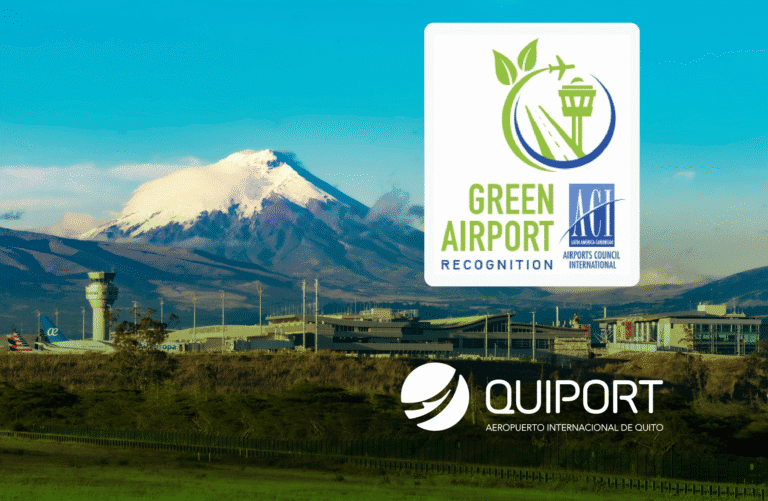• Instead of keeping wildlife away, Quito Airport coexists with it — transforming part of its land into a wildlife sanctuary.
• The “UIO Natural Laboratory” project converts 150 hectares of airport land into a living space for conservation, ecological restoration, and science.
• Over 72 hectares reforested, 12,000 native trees planted, 400 tons of CO₂ captured annually, and more than 160 wild animals released.
Quito’s Mariscal Sucre International Airport received the Green Airport Recognition 2025, awarded by the Airports Council International for Latin America and the Caribbean (ACI-LAC), thanks to an innovative project developed by Corporación Quiport, titled Laboratorio Natural UIO (UIO Natural Laboratory), which transforms part of the airport premises into a living space for conservation, restoration, and science.
A natural laboratory inside the airport The Laboratorio Natural UIO spans 150 hectares within the airport’s concession area, where biodiversity is protected, restored, and studied in harmony with air operations. Quiport has developed this pioneering model at Mariscal Sucre — the first of its kind in Ecuador and one of the few in the world to achieve safe coexistence between wildlife and aviation.
Unlike the traditional airport approach — which seeks to keep animals away for safety reasons — Quito has demonstrated that nature can coexist harmoniously with air operations when there is proper planning, scientific monitoring, and responsible environmental management.
• Ecological restoration: Over the past decade, 72 hectares of Andean dry forest have been restored with native species, capturing around 400 tons of CO₂ per year and regenerating essential ecosystem services.
• Biodiversity: More than 100 species have been recorded, including endemic and threatened ones such as the Quito marsupial frog, the Andean rabbit, and Soderstrom’s harvest mouse.
• Applied research: Camera trap and satellite monitoring studies confirmed the presence of the Andean fox, with home ranges of up to 7.8 km², showing that the airport serves as a safe refuge for native species.
• Operational safety: The presence of raptors, such as owls, contributes to the natural control of rodents, reducing runway risks and demonstrating that surrounding wildlife can safely coexist with aviation.
• Rehabilitation and release: In coordination with the environmental authority, over 160 rescued wild animals — including birds, mustelids, and snakes — have been released in this area over the past two years.
• Education and participation: Airport staff and nearby communities participate in citizen science and wildlife observation programs, strengthening the link between conservation and air operations.
Quiport’s leadership in airport sustainability Under the leadership of Corporación Quiport, responsible for the comprehensive management of Mariscal Sucre International Airport and the implementation of its environmental strategy, the airport has consolidated a management model that combines operational safety, sustainability, and environmental commitment.
This recognition adds to a history of regional leadership: it is the third environmental project by Quiport recognised with the Green Airport Recognition by ACI-LAC, reinforcing its position as a benchmark for airport sustainability in Latin America.
“The Laboratorio Natural UIO is a source of pride for Quito and for the Latin American airport sector. Since the construction and start of operations, Quiport has worked to understand the ecosystem in which we operate and to design projects that restore and conserve it. I thank ACI-LAC for recognising the initiatives that airports across Latin America and the Caribbean are implementing to protect the environment,” said Ramón Miró, President and CEO of Quiport.
Rafael Echevarne, Director General of ACI-LAC, added: “Quiport has shown that an airport can be both a driver of connectivity and an ally of the environment. At ACI-LAC, through the Green Airport Recognition program, we celebrate its commitment to biodiversity integration and the implementation of Nature-Based Solutions, reflecting the purpose of our initiative — to promote a more sustainable and environmentally conscious aviation sector in Latin America and the Caribbean.” A model for sustainable aviation The recognition was presented during the ACI-LAC Annual Assembly, Conference, and Exhibition 2025, held in Trinidad and Tobago, which brought together airport industry leaders from across the region.





